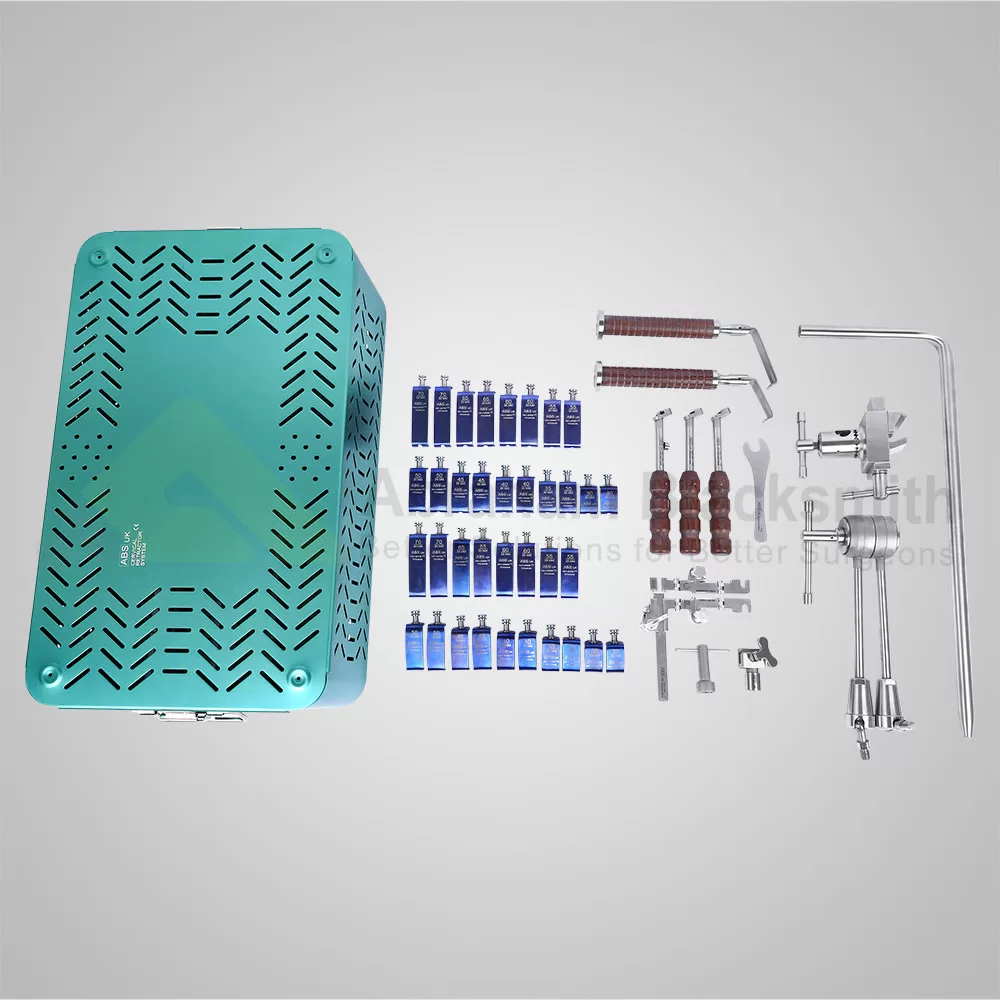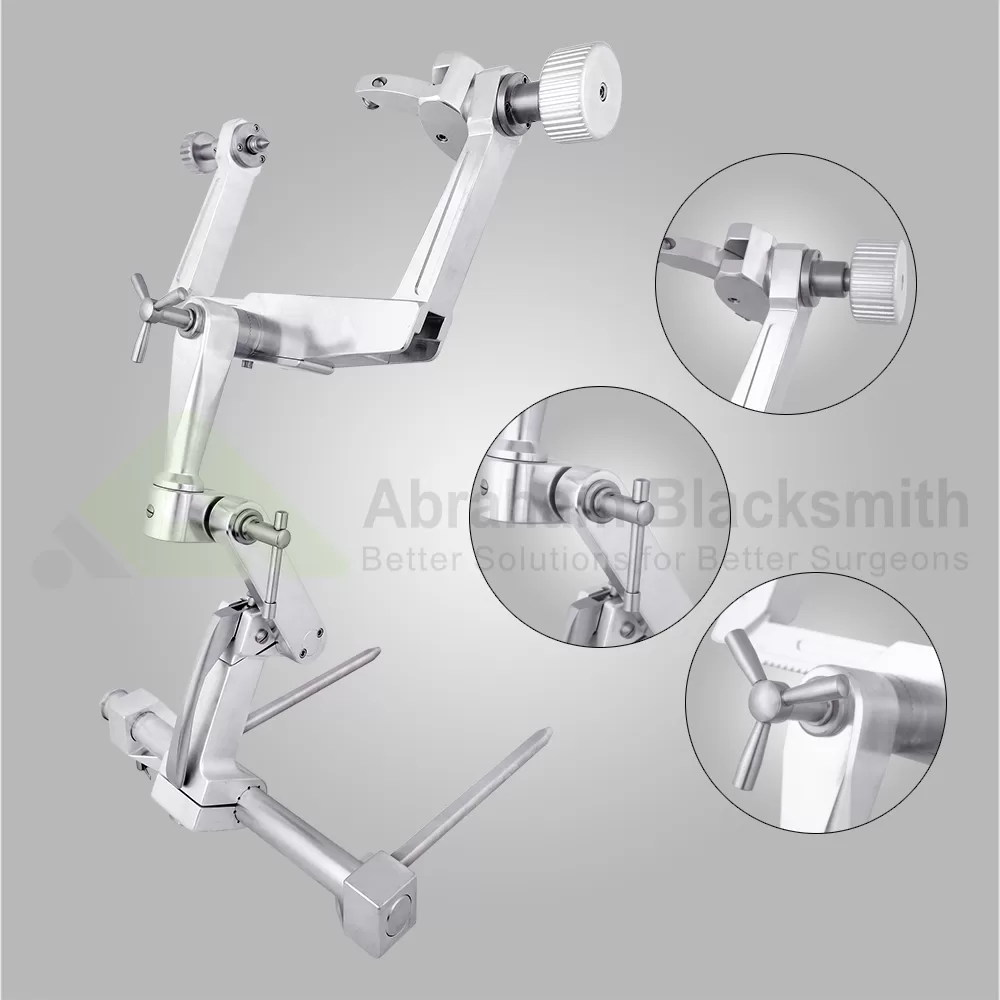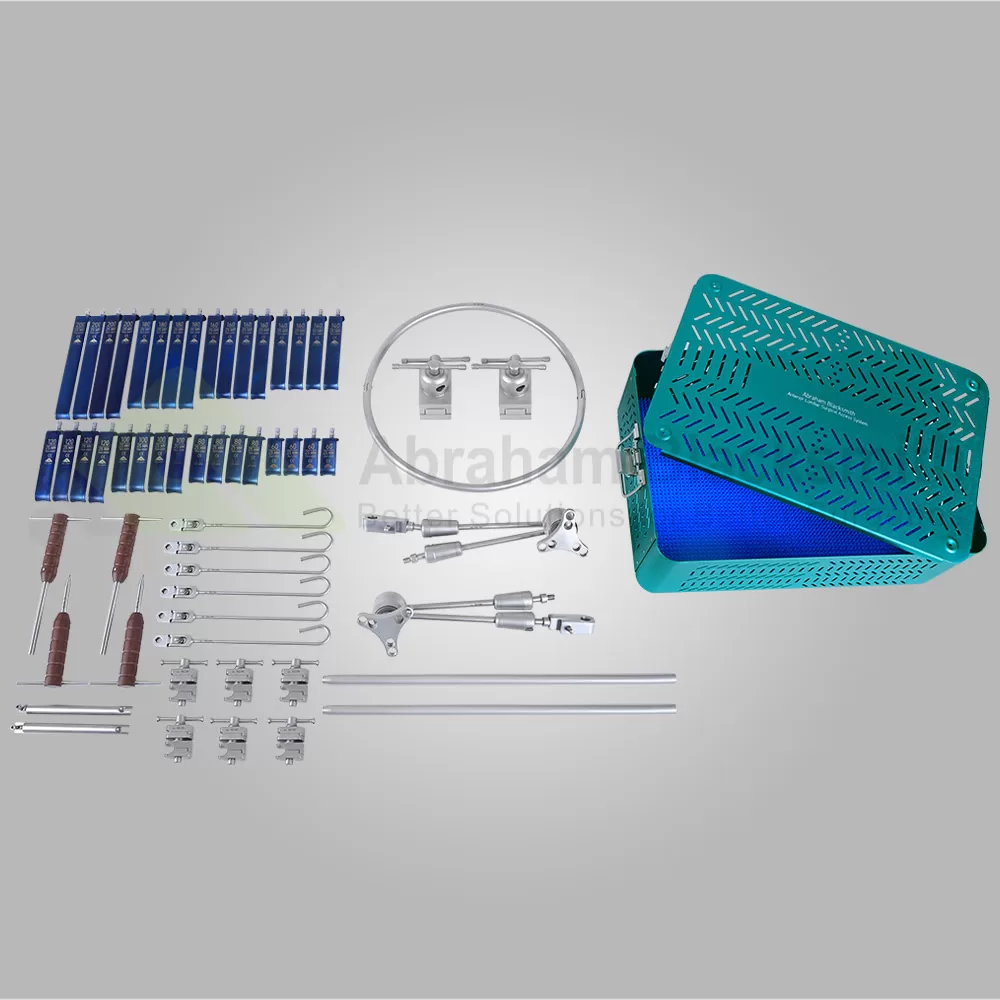Description
Key Components
Blades and Retractors: These come in various shapes and sizes, designed to hold back tissues and provide a clear view of the surgical site.
Frame: The frame holds the retractors and blades in place. It is typically attached to the operating table and can be adjusted to maintain the desired tension and position.
Adjustability Mechanisms: These allow for precise adjustments to the retractor blades, ensuring they are positioned correctly without exerting excessive pressure on the surrounding tissues.
Benefits of the Cervical Retractor System
Enhanced Visibility and Access: By effectively retracting tissues, the system provides surgeons with a clear and unobstructed view of the cervical spine. Which is crucial for the success of the procedure.
Minimized Tissue Damage: The use of specialized retractors and blades minimizes the risk of damaging muscles and other soft tissues. Which can lead to faster recovery times and reduced postoperative pain for patients.
Improved Surgical Outcomes: With better access and visibility, surgeons can perform more precise and effective procedures. Potentially leading to improved patient outcomes and lower complication rates.
Efficiency in Surgery: The stability and adjustability of the system can reduce the duration of the surgery. By providing a steady and reliable retraction, allowing surgeons to focus on the intricate aspects of the procedure.
Applications in Spinal Surgery
The Cervical Retractor System is used in a variety of cervical spine surgeries, including:
Anterior Cervical Discectomy and Fusion (ACDF): This procedure involves removing a damaged disc to relieve spinal cord or nerve pressure and fusing the adjacent vertebrae.
Posterior Cervical Decompression: This surgery aims to relieve pressure on the spinal cord or nerves by removing parts of the vertebrae or discs.
Cervical Laminectomy: This procedure involves removing part of the vertebral bone called the lamina to relieve pressure on the spinal cord or nerves.














